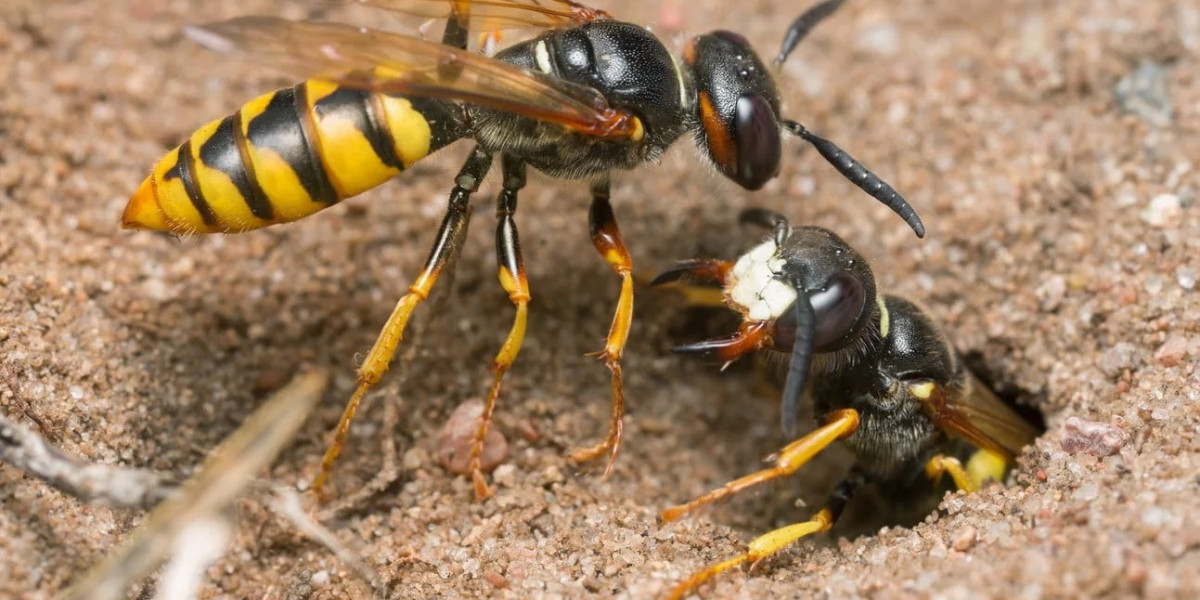Living in Melbourne means enjoying a vibrant city life with its laneways, beaches, and mild climate. But that same temperate weather, with its warm summers and occasional humidity, creates ideal conditions for unwanted guests like wasps, rodents, and fleas. These common pests can turn your home or business into a battleground, spreading diseases, causing damage, and disrupting daily routines. If you've noticed more buzzing around your eaves, scurrying in the walls, or itchy bites on your ankles, you're not alone. Many Melburnians face these issues year-round, especially as we head into spring when activity ramps up. For effective solutions, professional intervention is key, such as WASP Control Melbourne services that target nests safely and swiftly.
Understanding these pests helps you spot problems early and take action before they escalate. In this guide, we'll dive into what makes wasps, rodents, and fleas so persistent in our city, the risks they pose, and practical steps to keep them at bay. With Melbourne's mix of urban and suburban spaces, from inner-city apartments to bayside homes, tailored pest management is essential for a pest-free environment.
Why Wasps Are a Buzzing Nuisance in Melbourne Homes
Wasps might look like harmless flyers at first glance, but in Melbourne, they pack a punch with their aggressive stings and rapid nesting habits. Our city's parks and gardens provide plenty of wood and water sources, which these insects chew into papery nests using their saliva. Common types here include the European wasp, known for its black and yellow stripes and vicious temperament, and the native paper wasp, with its slender waist and preference for sheltered spots like under eaves or in sheds.
Spotting a wasp issue isn't always straightforward. You might notice an uptick in sightings near your barbecue or rubbish bins, especially in late spring when queens start building. Those grey, honeycomb-like nests can grow from golf ball size to as large as a football, often hidden in wall cavities, roof spaces, or even bird boxes. If you're in a leafy suburb like Hawthorn or along the Yarra, follow a wasp's flight path at dusk to locate the nest, but don't approach it yourself, as disturbed colonies can swarm.
The health dangers can't be understated. A single sting causes sharp pain and swelling, but multiple stings or allergic reactions can lead to severe issues like anaphylaxis, particularly risky for kids, the elderly, or those with bee allergies. In Australia, wasp stings send hundreds to hospital each year, and pets aren't immune, either, often suffering mouth stings from chasing them. Prevention starts with vigilance: seal cracks in your home's exterior, fix leaking taps that attract them to water, and cover food scraps promptly during outdoor gatherings. Eco-friendly traps with sugary bait can deter scouts, but for established nests, experts recommend professional dust treatments applied at night when wasps are less active.
Tackling Rodent Intruders: Rats and Mice in Your Melbourne Space
Rodents are the sneaky saboteurs of Melbourne properties, thriving in our sewers, parks, and even bustling CBD alleys. The brown rat, or Norway rat, is a burrowing beast that loves damp spots like under floorboards, while the agile black rat scales roofs and trees with ease. House mice, smaller but no less troublesome, squeeze through gaps as tiny as a pencil's width. These pests explode in numbers during autumn, seeking warmth in homes as temperatures drop.
Signs of rodent guests are telling if you know what to look for. Fresh droppings, rice-grain sized for mice or larger capsules for rats, often appear along skirting boards or in pantries. Listen for nocturnal scratching or gnawing, especially in attics, and check for greasy rub marks on beams from their oily fur. Nests made from shredded paper or insulation tucked in quiet corners signal a breeding site. In commercial spots like warehouses in Footscray or residential garages in St Kilda, chewed wiring poses fire hazards, costing Aussies millions annually in repairs.
Beyond structural damage, rodents are disease vectors par excellence. They carry leptospirosis from urine-soaked areas, salmonella on fur that contaminates food, and hantavirus in rare cases, leading to respiratory woes. Families with young children or immunocompromised members face heightened risks, as these pests forage at night when we're asleep. To prevent invasions, store food in airtight containers, trim overhanging branches that act as highways, and install fine-mesh screens on vents. Snap traps or bait stations work for light issues, but for widespread problems, integrated approaches like exclusion sealing and monitoring are vital. Opt for humane, multi-dose baits that reduce secondary poisoning risks to native wildlife, aligning with Victoria's strict biosecurity rules. For professional help, consider Rodent Control Melbourne to eliminate infestations safely.
Fleas: The Itchy Invaders Hitching Rides on Melbourne Pets
Fleas are the ultimate hitchhikers, leaping into Melbourne homes via dogs, cats, or even wildlife like possums wandering from the Royal Botanic Gardens. The cat flea dominates here, a reddish-brown jumper up to 2mm long that infests 95 per cent of local cases, closely followed by the dog flea. These parasites complete their life cycle in just two weeks under our humid conditions, laying eggs in carpets, pet bedding, and lawns that hatch into biting larvae.
Infestations reveal themselves through pet distress: excessive scratching, red sores from flea allergy dermatitis, or flea dirt, those pepper-like black specks that turn red when wet with blood. Humans get itchy welts on legs and ankles from opportunistic bites, and in heavy outbreaks, pale gums in pets signal anaemia from blood loss. Worse, fleas transmit tapeworms via ingestion and bacterial infections like murine typhus, though plague is exceedingly rare in urban Victoria. With Melbourne's pet-loving culture, from beach walks in Brighton to park romps in Carlton, these pests spread fast in shared spaces.
Treatment demands a full-property assault, not just spot fixes. Vacuum daily to suck up eggs, wash fabrics in hot water, and apply vet-recommended preventatives like spot-ons. For yards, mow short and rake debris to expose pupae to sunlight. Insect growth regulators disrupt breeding, but pros use them alongside steam cleaning for thorough kills. Avoid foggers alone, as they miss cracks; instead, focus on pet treatment first, then environment. In multi-pet homes, quarantine new arrivals to curb introductions. Expert services like Fleas Control Melbourne ensure complete eradication without harming your family or pets.
Integrated Strategies for Lasting Pest Peace in Melbourne
Combining efforts against these pests yields the best results. Start with a property audit: check for entry points like gaps around pipes or doors, and maintain gardens by removing leaf litter that harbours fleas and rodents. Indoor hygiene, like prompt spills cleanup, deters wasps and mice alike. Seasonal vigilance matters, too, with wasps peaking in summer and rodents in winter.
Regular inspections catch issues early, saving time and money. Use weatherproof bins to deny rodents access, install fly screens for wasps, and treat pets monthly during peak flea season. Natural deterrents like peppermint oil repel mice, while diatomaceous earth dehydrates fleas in carpets. For businesses, comply with food safety standards by scheduling routine checks.
Community action helps, too. Report feral cat colonies or overflowing bins to council, as these fuel flea and rodent cycles. In units or townhouses, coordinate with neighbours for simultaneous treatments to prevent reinfestation. Education is key: teach kids not to feed wildlife that attracts pests, and keep compost sealed.
For comprehensive defence, enlist licensed locals who know Melbourne's unique challenges, from coastal humidity in Williamstown to urban density in Fitzroy. They bring tools like thermal imaging for hidden nests and EPA-approved treatments safe for Aussie backyards. Long-term contracts often include follow-ups, guaranteeing peace of mind.
In wrapping up, reclaiming your space from wasps, rodents, and fleas restores comfort and safety. Whether it's a quick nest removal or ongoing monitoring, proactive steps keep Melbourne's pest pressures in check. For reliable, family-run expertise across the city, reach out to RF Pest Management – your partners in pest-free living.








